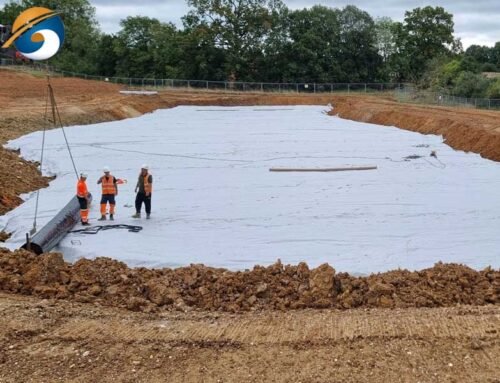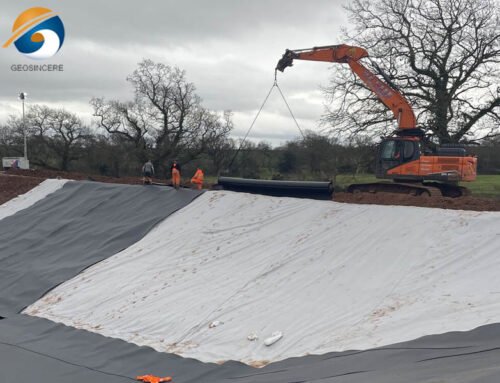Geo tech fabric, also known as geotextile, is a versatile material that has quietly revolutionized modern construction and environmental projects. Made from synthetic fibers like polyester or polypropylene, this permeable geotextile fabric is designed to interact with soil, water, and other materials to solve engineering challenges. But why is it so widely used? Let’s break down its key advantages in simple terms.If you’ve ever driven on a smooth highway built over swampy land, walked on a stable hiking trail carved into a hillside, or admired a riverbank that stays intact despite heavy rains, you’ve likely witnessed the invisible power of GEOSINCERE geo tech fabric. This unassuming material, often hidden beneath the surface, is a cornerstone of modern engineering and environmental projects. But what exactly is it, and why is it so essential? Let’s explore its role, benefits, and surprising versatility.
1. What Is Geo Tech Fabric?
Geo tech fabric, commonly called geotextile, is a synthetic material made from durable polymers like polypropylene or polyester. Imagine it as a high-tech cloth engineered to interact with soil, water, and other materials. Unlike everyday fabrics, it’s designed to withstand harsh conditions—think extreme temperatures, chemical exposure, and decades of wear and tear.
There are two main types:
1.1 Woven Geotextiles:
These resemble a tightly knit mesh, offering superior strength for heavy-duty tasks like stabilizing roads or retaining walls.
1.2 Non-Woven Geotextiles:
These have a fuzzy, felt-like texture and excel at filtration and drainage, such as preventing soil from clogging drainage pipes.
Whether woven or non-woven, geo tech fabric acts as a problem-solver for engineers, farmers, and even gardeners. Its magic lies in its simplicity: it reinforces, filters, protects, and drains—all while staying out of sight.
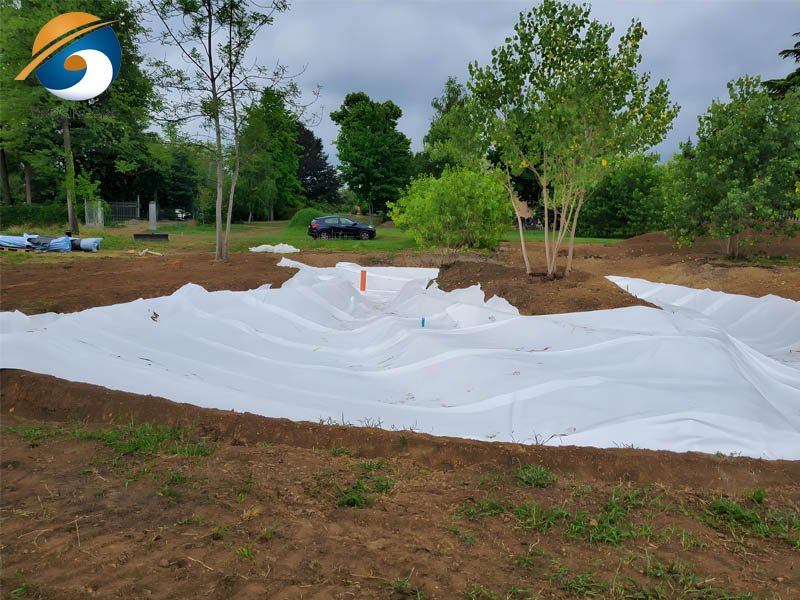
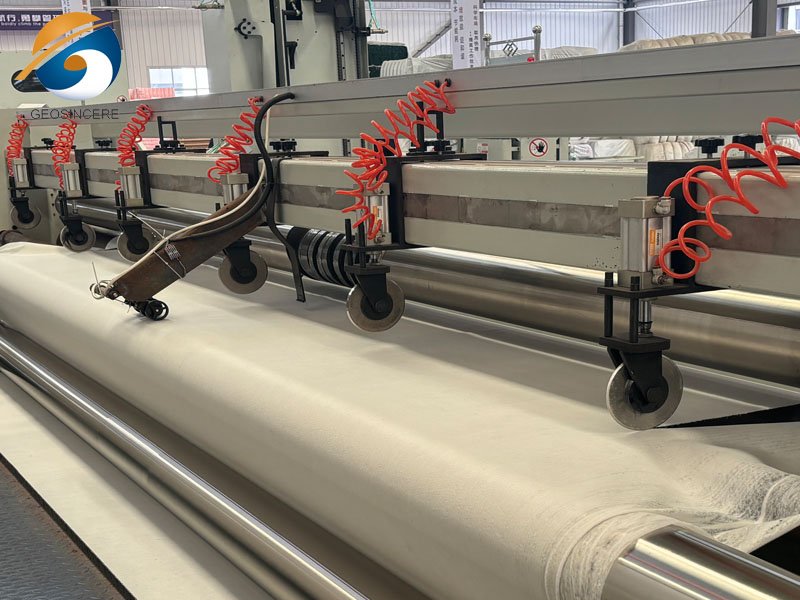
2. Top Benefits of Geo Tech Fabric
2.1 Geo Tech Fabric – Reinforces Weak or Unstable Ground
Building on soft, sandy, or uneven soil is like constructing a house on a wobbly table. Traditional fixes—like excavating and replacing soil—are costly and time-consuming. Geotech fabric simplifies this. When placed between layers of soil or gravel, it acts like a reinforcement net, distributing weight evenly and preventing shifting or sinking.
Example: A highway built over marshland uses geotextile to create a stable base, avoiding the need to remove and replace tons of unstable soil.
2.2 Geo Tech Fabric – Stops Soil Erosion in Its Tracks
Erosion—whether from wind, rain, or waves—can devastate landscapes, wash away fertile farmland, or undermine infrastructure. Geotech fabric combats this by anchoring soil in place. On slopes, riverbanks, or coastal areas, it’s laid like a protective blanket. Over time, plants grow through the fabric, creating a natural barrier that blends human engineering with nature’s resilience.
Example: After a wildfire, geotextile is used on charred hillsides to hold soil until new vegetation regrows, preventing mudslides.
2.3 Geo Tech Fabric – Manages Water Like a Pro
Poor drainage leads to flooded fields, cracked foundations, or soggy gardens. Geotech fabric tackles this by acting as a smart filter. It lets water pass through while trapping dirt, sand, and debris. This keeps drainage systems running smoothly and prevents clogs.
Example: In a backyard garden, geotextile placed under gravel paths ensures rainwater drains away without turning the soil into mud.
2.4 Geo Tech Fabric – Saves Money, Time, and Resources
Geo tech fabric is a budget-friendly game-changer:
- Reduces Material Costs: It minimizes the need for thick layers of gravel, concrete, or soil.
- Speeds Up Projects: Lightweight and easy to cut, it’s faster to install than traditional methods.
- Long-Term Savings: Its durability means fewer repairs or replacements over time.
Example: A farmer building a dirt road uses geotextile to stabilize the ground instead of importing expensive rock, slashing costs by up to 50%.
2.5 Geo Tech Fabric – Eco-Friendly Superpowers
Though made from plastic, geotech fabric supports sustainability in surprising ways:
- Protects Ecosystems: By preventing erosion, it safeguards habitats for plants and wildlife.
- Reduces Carbon Footprint: Less excavation and transportation of heavy materials mean fewer emissions.
- Recyclable Options: Some geotextiles are designed to be recycled, reducing waste.
3. Where Is Geo Tech Fabric Used?
This material’s versatility shines across countless applications:
3.1 Construction and Infrastructure
- Roads and Highways: Prevents potholes by reinforcing weak soil beneath asphalt.
- Railways: Stabilizes tracks to avoid shifting or sinking.
- Retaining Walls: Acts as a hidden layer to distribute pressure and prevent collapse.
3.2 Agriculture and Landscaping
- Drainage Systems: Lines ditches or fields to prevent waterlogging and protect crops.
- Greenhouses: Controls weeds and improves soil structure in raised beds.
- Eco-Lawns: Used under artificial turf to allow drainage and reduce maintenance.
3.3 Environmental Protection
- Landfills: Separates waste layers and filters harmful liquids.
- Coastal Defense: Shields beaches and dunes from erosion caused by storms.
- Reforestation: Stabilizes soil in areas recovering from deforestation or mining.
3.4 Everyday Applications
- Home Gardens: Placed under mulch to suppress weeds while letting water through.
- Driveways: Reinforces gravel paths to prevent ruts and sinking.
- Playgrounds: Provides a stable base under artificial surfaces like rubber mulch.
4. Why Choose Geo Tech Fabric Over Traditional Methods?
Before geotextiles, engineers relied on methods like:
- Thick gravel layers: Expensive, heavy, and time-consuming to install.
- Concrete walls: Rigid, costly, and environmentally disruptive.
- Natural fibers (e.g., jute): Biodegrade quickly, requiring frequent replacement.
Geo tech fabric offers a modern alternative: it’s lightweight, adaptable, and long-lasting. For instance, a single layer of geotextile can replace feet of gravel in a drainage system—saving time, money, and physical labor.
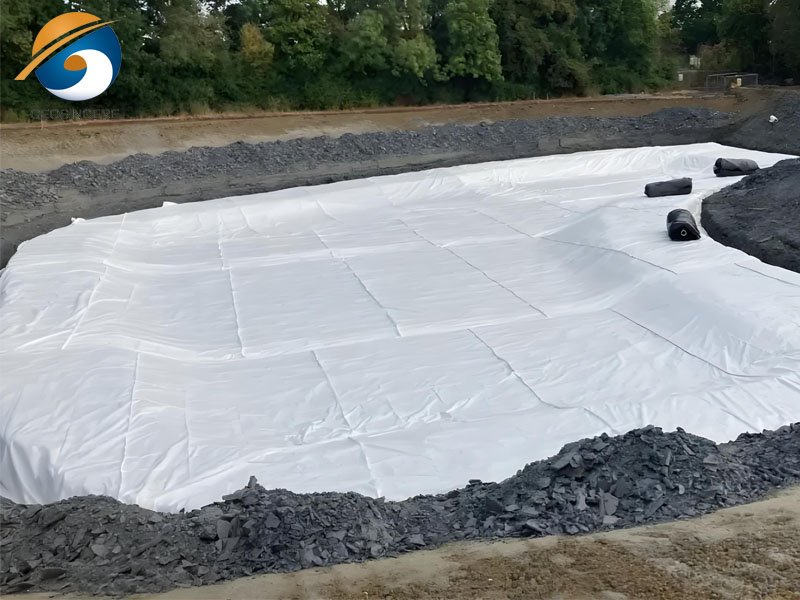
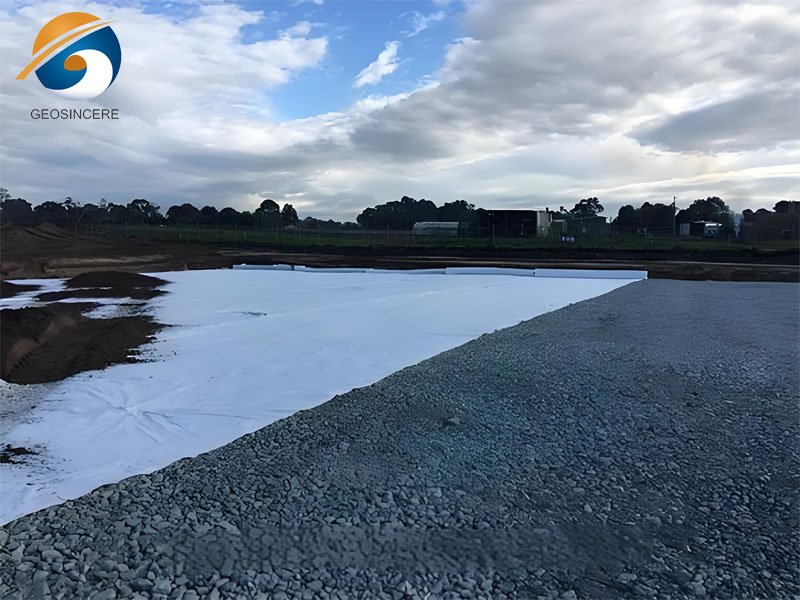
5. The Future of Geo Tech Fabric
Innovations are making geotextiles even smarter and greener:
- Biodegradable Options: Researchers are developing plant-based geotextiles that decompose after stabilizing soil long enough for vegetation to grow.
- Smart Sensors: Some fabrics now integrate sensors to monitor soil health or stress levels in real time.
- Recycled Materials: Manufacturers are using recycled plastics to reduce environmental impact.
6. Conclusion
Geotech fabric is the quiet hero of modern engineering—strengthening the ground beneath our feet, protecting ecosystems, and saving resources. Its ability to solve problems like erosion, drainage, and instability makes it indispensable in projects big and small. From highways to home gardens, this innovative material proves that sometimes the most powerful solutions are the ones you never see. Next time you notice a landslide-free hillside or a pothole-free road, remember: geo tech fabric is likely working its magic underground.



